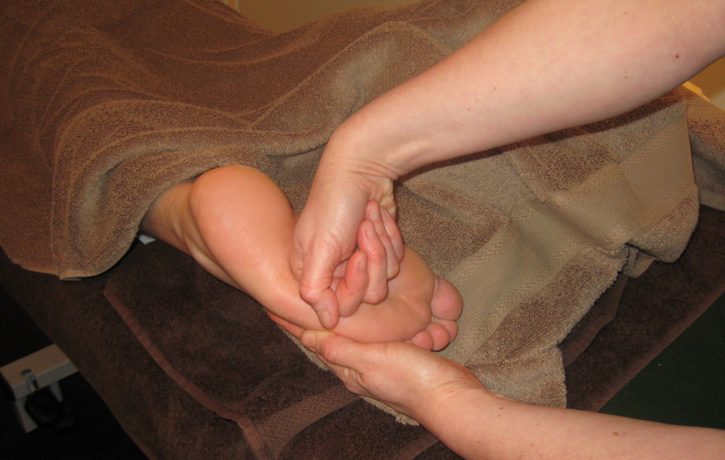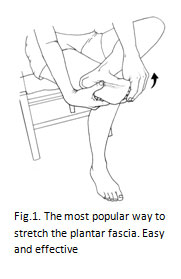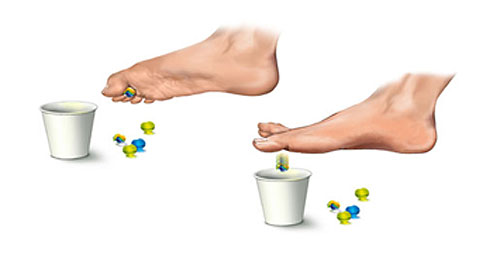Plantar Fasciitis – A Step in the Wrong Direction

What is Plantar Fasciitis?
Plantar Fasciitis (PF) as some of you may know is the bane of all injuries for runners in particular. It’s a common injury found in a lot of individuals including people overweight, pregnant women, or even those who are on their feet most of the day.
PF is an overuse injury you see so the more irritated it becomes the more serious the injury. The plantar fascia is a tough tissue that runs from the bottom of your heel across to the ball of your foot. Its role is to cushion the bones in your feet and support the arch itself.
Causes of injury can be a number of things but ultimately the more categories you find yourself in, the more likely you are to suffer from the condition.
- Incorrect footwear applying pressure on the arch
- Tight calf muscles
- Flat feet
- Running on hard surfaces i.e. road running
- Overuse/overtraining
- Incorrect training or gait
If you find you have a few of these symptoms you will be more susceptible to PF if not already.
The pain you feel will primarily be felt between your heel bone and your arch, but research shows it can spread right up to your toes (Around 15% of unlucky victims have it this widespread). The pain will be worse in the mornings or after long periods of rest. Most of the time a victim will notice pain to ease with exercise but return once the activity has stopped. As opposed to stress fractures or heel spurs, PF is felt on the push-off rather than the impact to the ground.
PF if ignored usually won’t lead to any further injuries, but it is possible in chronic stages for the pain to change your gait. That in turn can lead to hip or knee problems, or possibly lower back pain.
How to Avoid Plantar Fasciitis
There are a number of things that can help to avoid it every day at home. Keeping a good stretching routine in your foot is vital if you start feeling aggravation (See fig. 1.).
A sock known as the “Strassburg sock” can hold your foot in a stretched position so may be worth looking into those. Some articles recommend sleeping with the sock on but I’m personally not too convinced of the positive effects. The source on wearing the sock overnight is of course written by the company selling the product! But other research based on the therapeutic healing side of things recommends not to hold a stretch longer than 60 seconds or you could start damaging tissue. This is where perhaps wearing a Strassburg sock overnight is arguable as you could cause damage in the small muscles deep to the plantar fascia, leading to a completely new injury.
Another way to keep PF at bay is keeping the footwear correct, especially if you’re a runner! Wearing support trainers if you have flat feet is a major no-go for example, as that will apply constant pressure onto the plantar fascia. During long-distance running, you’re asking for an inflammatory response!
What To Do If You Get Plantar Fasciitis
One important thing to remember if you get PF is to make sure you follow the advice given to you by the medical professional spoken to. Follow advice carefully and religiously otherwise the healing process will take so much longer. Remember 50% of treatment is done in the clinic and the other 50% by you at home.
Rest is the key ingredient to help reduce inflammation but this is easier said than done. With PF, rest means no walking or running. This is a pretty hard task to do for days on end so of course with advice like this you have to adhere to it as much as you can. Think of it as a good excuse to have a friend or family member to be at your every beck and call ;-).
Ice is another good treatment to use at home. In the past, I’ve spoken to a lot of sufferers and therapists who all mention the same type of use with ice, and that’s to freeze a bottle of water and roll that across the bottom of your foot. Not only does this apply to the cold but also stretches out the plantar fascia. Depending on what your therapist says however is dependent on whether you should do this. In the early stages of PF, stretching isn’t always the best thing to do straight away.
Finally and most likely the more obvious answer is to see a therapist! Don’t try the internet diagnosis and treatment method, and don’t speak to a friend that had it once and go by their example. Everyone is an individual and has a different severity or timescale to the injury not to mention lifestyle. Sometimes even age and gender come into it. Ultimately seeing a qualified professional even for one time will point you in the right direction for fixing up that injury, knowing where it’s at in the healing process, and while you’re there; help promote the blood flow to the site of injury with massage for healing quality and efficiency.
The picture below doesn’t fit into any of the above information, but in my studies, I found it and thought it was really quite a good illustration. If you’re a month or so into PF, try buying small marbles or something of the same nature, and use your toes to pick them up and put them into a cup. A simple task that involves constant flexion/extension of the foot muscles. Movement of the foot muscles is a good way to avoid PF in the first place, and also a good rehabilitation technique.
- Deepen Embodiment: Somatic Breathing with the Realization Process - 20th June 2025
- How Massage Transforms Muscle and Physical Health - 16th May 2025
- What is Traditional Chinese Medicine (TCM)? - 29th April 2025


